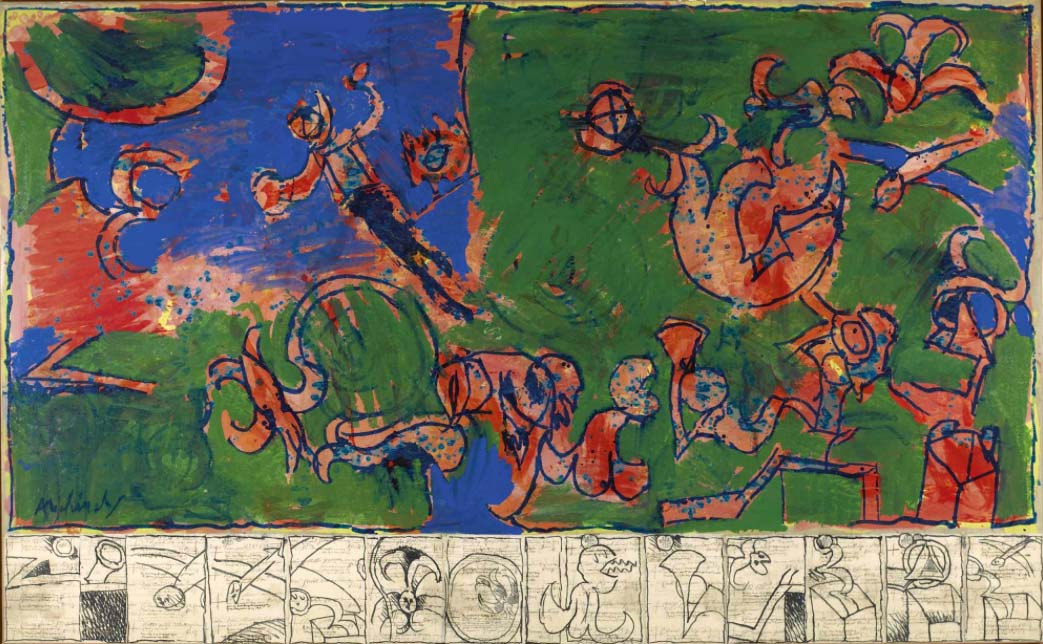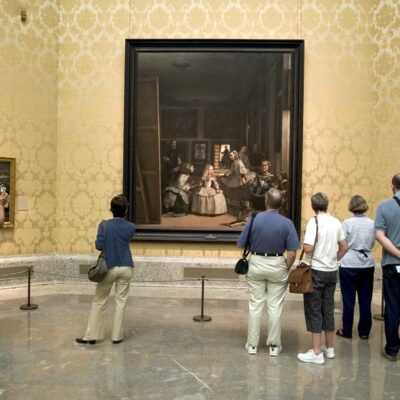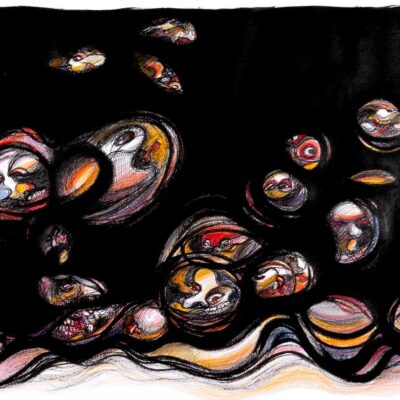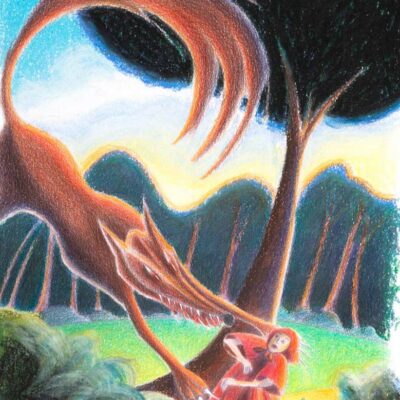
Pierre Alechinsky: The Spontaneous Fluidity of Graphic Writing
Pierre Alechinsky «Sometimes it’s opposite», 1970 © RMFAB, Brussels / Courtesy of the artist / photo: Grafisch Buro Lefevre, Heule
It was through the CoBrA group that I discovered the work of Pierre Alechinsky when I was a student during the ’80s. The CoBrA group appealed to me – as did the work of Jackson Pollock, Willem De Kooning and Jean Dubuffet – because of the fine line they tread between representation and abstraction, and because of their very spontaneous approach to art. The movement and impulsiveness of drawn lines are essential elements of their work.
Pierre Alechinsky was fully involved in this artistic movement, with his spontaneous style of graphic writing. His illustrations gives rise to a style of writing, a narrative, with an incredible fluidity in simple and poetic lines. What I love about Alechinsky’s work is his use of old printed paper from flea markets, as well as his stamping on manhole covers.
It was when visiting the 2017 exhibition ‘Les Palimpsestes’ at the Centre de la Gravure et de l’Image Imprimée in La Louvière that I deepened the understanding of this universe. I was impressed by his colourful prints. With Alechinsky, the gesture is essential. I feel the same pleasure when I embark on my spontaneous drawings, when my hand is completely free and the Chinese ink-soaked brush is carried by my emotions and my impulses in the moment. No more stress, no deadlines, just a deep sense of well-being, and, ultimately, a healthy level of introspection.
Forms are born out of this spontaneity. And from these forms, a universe is built, but also accidents, unexpected and unsuspected elements that are then transformed into further ideas. The poetry that emanates from Alechinsky’s work is profound and benevolent. It goes beyond mere lines and drawing. Another important element is this liberation of the gesture and the body, with a format that is much larger than traditional illustrations – we are talking here of dimensions exceeding one square metre – and therefore this ability to extend the movement of the hand to the entire body. The mixture of lines (sometimes black) and coloured elements (or coloured zones) is fully assimilated and gives a remarkable balance to Pierre Alechinsky’s work.
Link to the documentary (in French)
«La Sept ARTE et V.F. Films Production présentent PIERRE ALECHINSKY L’œil du Peintre»



